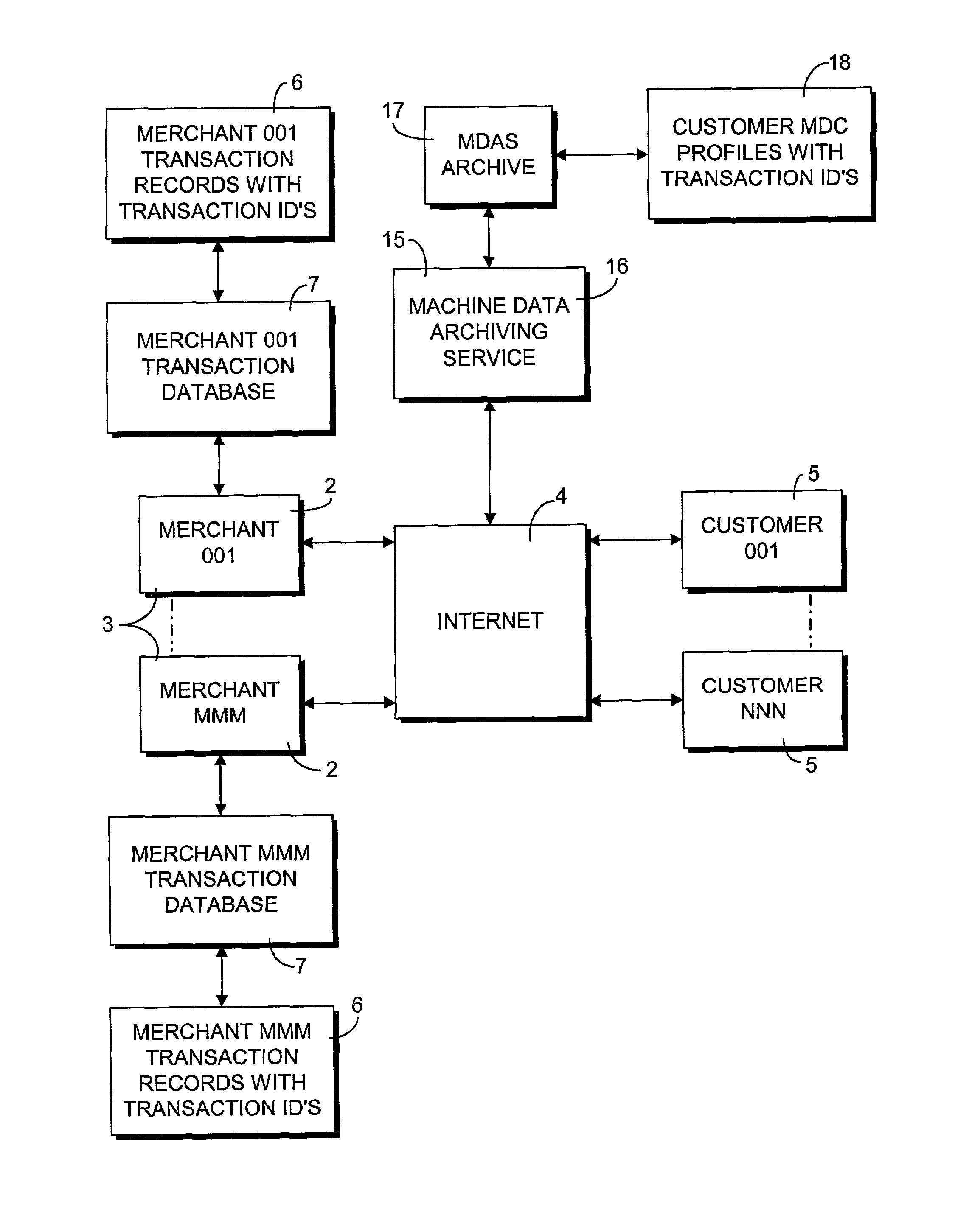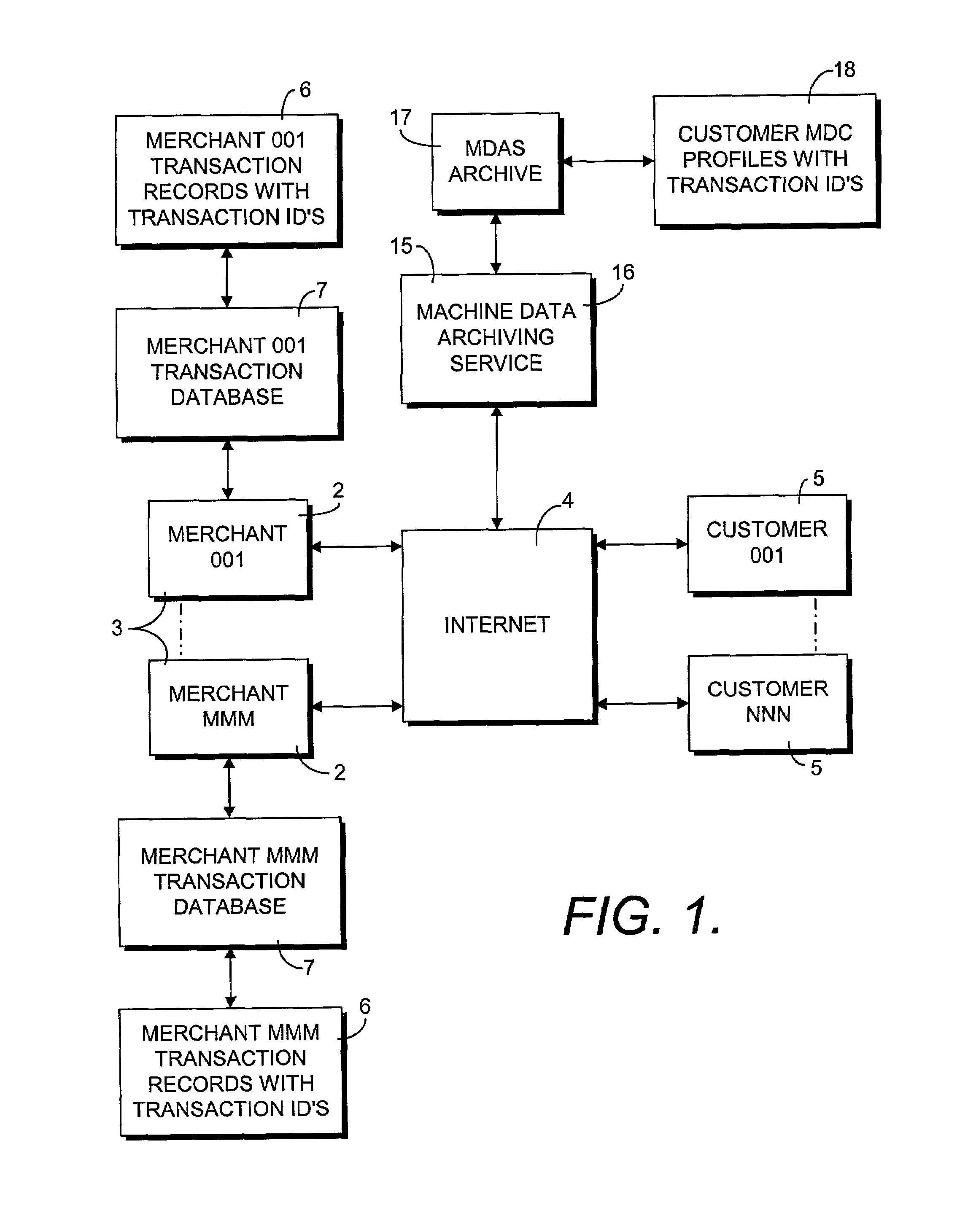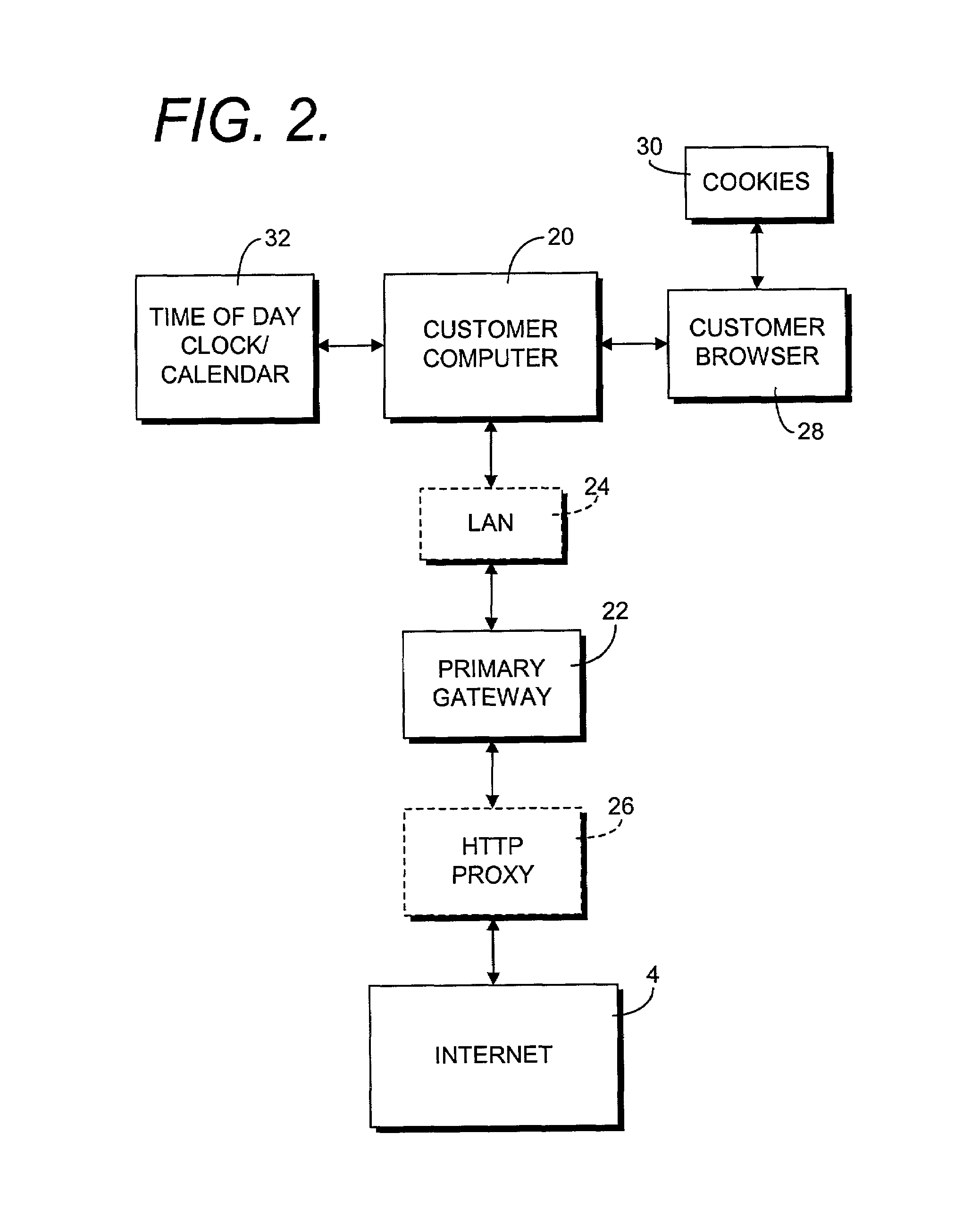Online machine data collection and archiving process
a machine data and archiving technology, applied in the field of identity detection techniques, can solve the problems of consumers ultimately paying the cost, new opportunities for unscrupulous persons to take advantage of the mechanisms of internet transactions, and consumers paying the initial cost of fraud, so as to narrow the machine profile
- Summary
- Abstract
- Description
- Claims
- Application Information
AI Technical Summary
Benefits of technology
Problems solved by technology
Method used
Image
Examples
Embodiment Construction
[0026]As required, detailed embodiments of the present invention are disclosed herein; however, it is to be understood that the disclosed embodiments are merely exemplary of the invention, which may be embodied in various forms. Therefore, specific structural and functional details disclosed herein are not to be interpreted as limiting, but merely as a basis for the claims and as a representative basis for teaching one skilled in the art to variously employ the present invention in virtually any appropriately detailed structure.
[0027]Referring to the drawings in more detail:
[0028]The reference numeral 1 (FIG. 3) generally designates a process for online collection of machine identifying or profiling data of computers involved in commercial transactions and for archiving such data to facilitate analysis for fraud detection purposes. The process collects machine identifying or profiling data of computers involved in commercial transactions and archives such data in a third-party machi...
PUM
 Login to View More
Login to View More Abstract
Description
Claims
Application Information
 Login to View More
Login to View More - R&D
- Intellectual Property
- Life Sciences
- Materials
- Tech Scout
- Unparalleled Data Quality
- Higher Quality Content
- 60% Fewer Hallucinations
Browse by: Latest US Patents, China's latest patents, Technical Efficacy Thesaurus, Application Domain, Technology Topic, Popular Technical Reports.
© 2025 PatSnap. All rights reserved.Legal|Privacy policy|Modern Slavery Act Transparency Statement|Sitemap|About US| Contact US: help@patsnap.com



